John Blanke Worksheets
Do you want to save dozens of hours in time? Get your evenings and weekends back? Be able to teach about John Blanke to your students?
Our worksheet bundle includes a fact file and printable worksheets and student activities. Perfect for both the classroom and homeschooling!
Resource Examples
Click any of the example images below to view a larger version.
Fact File
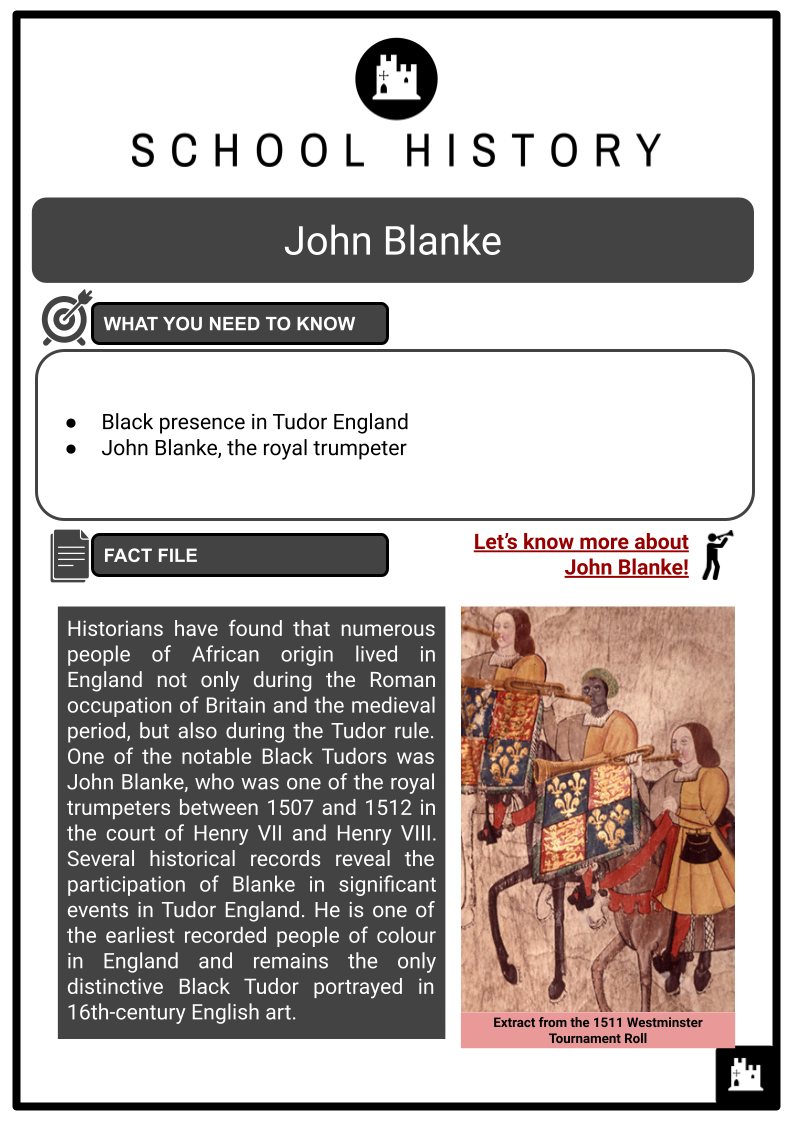
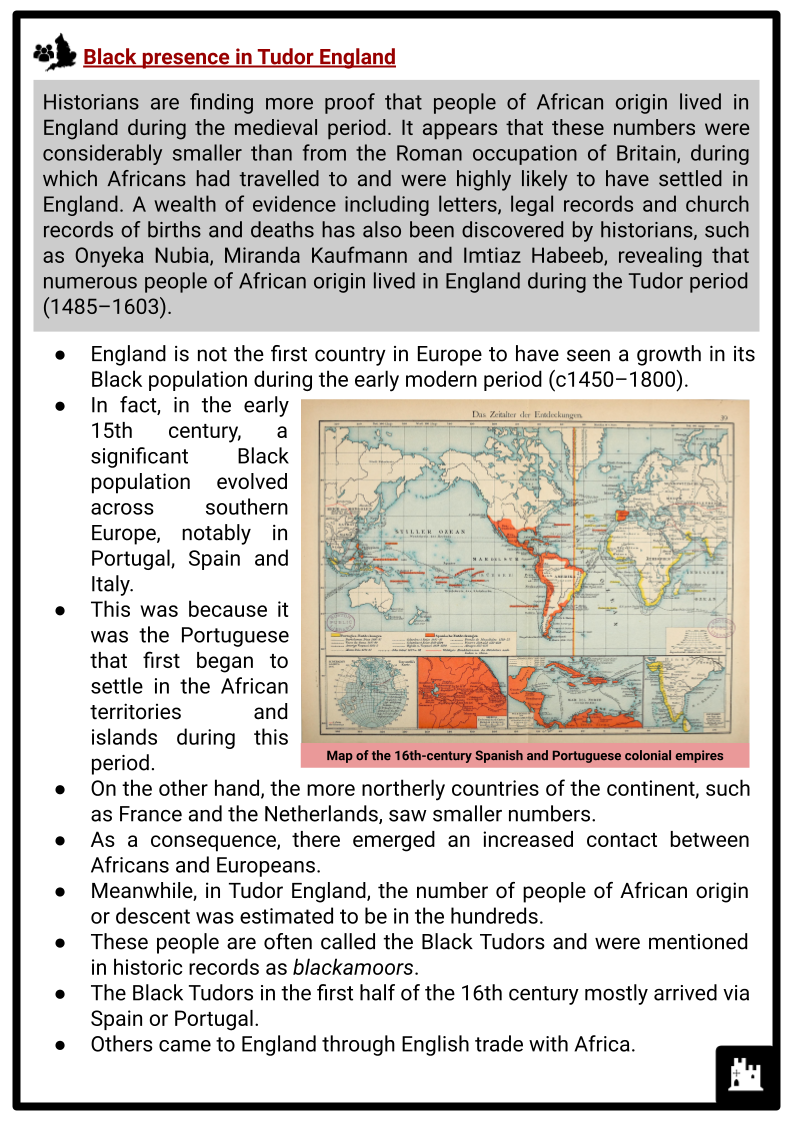
Student Activities
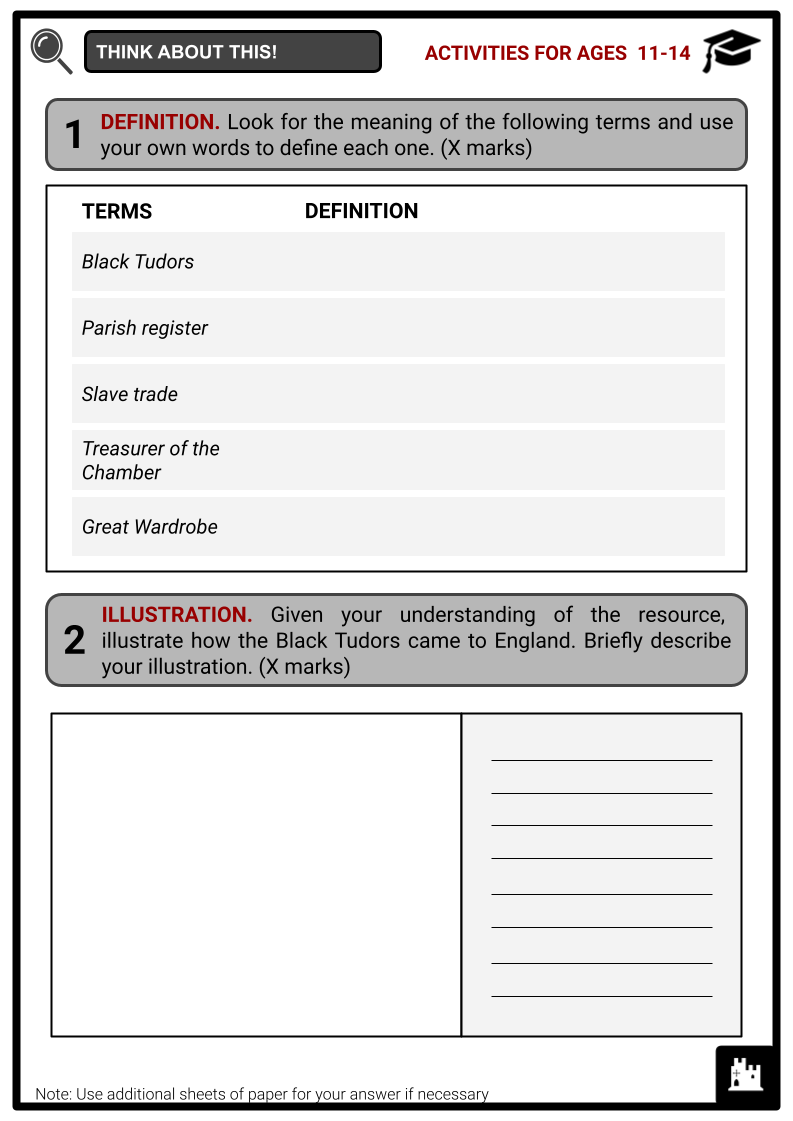
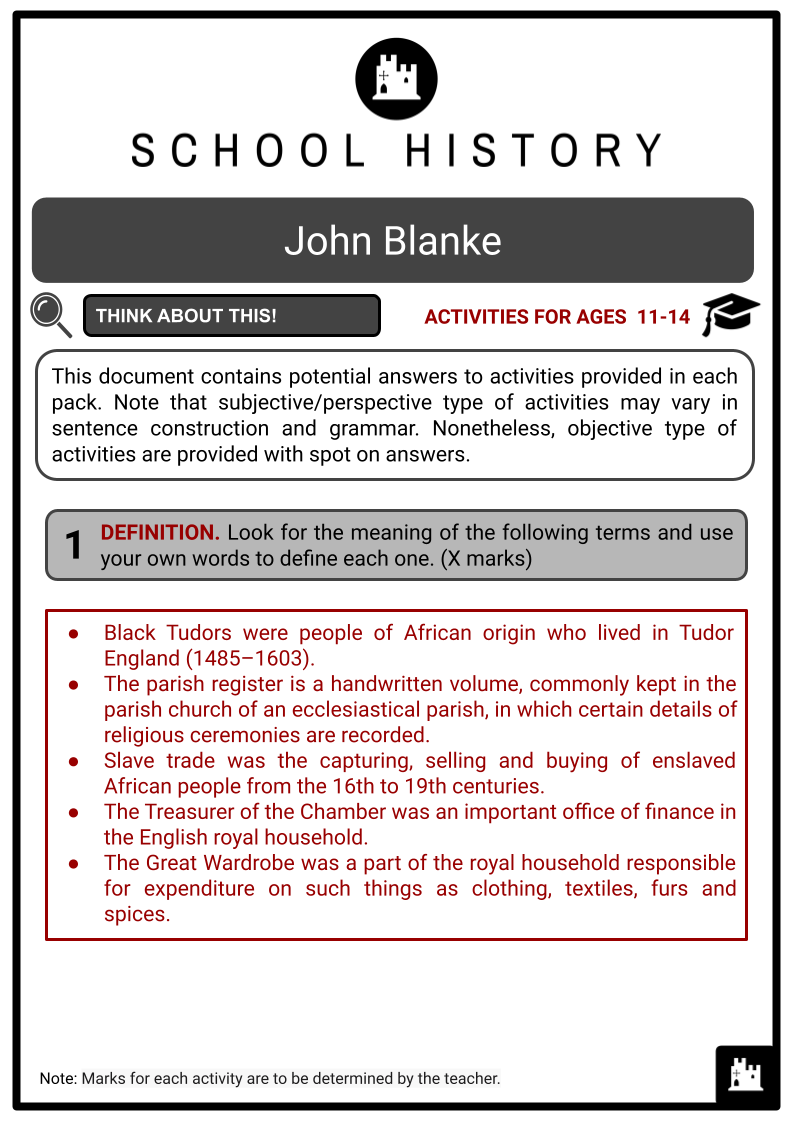
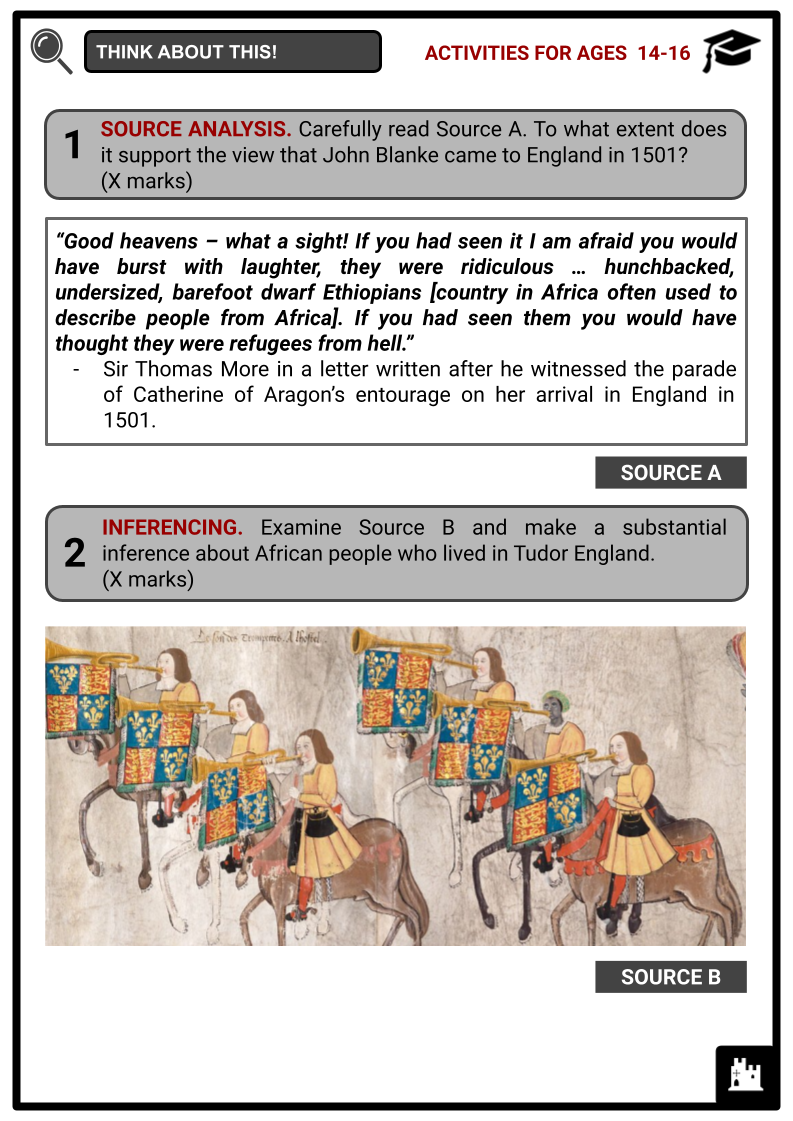
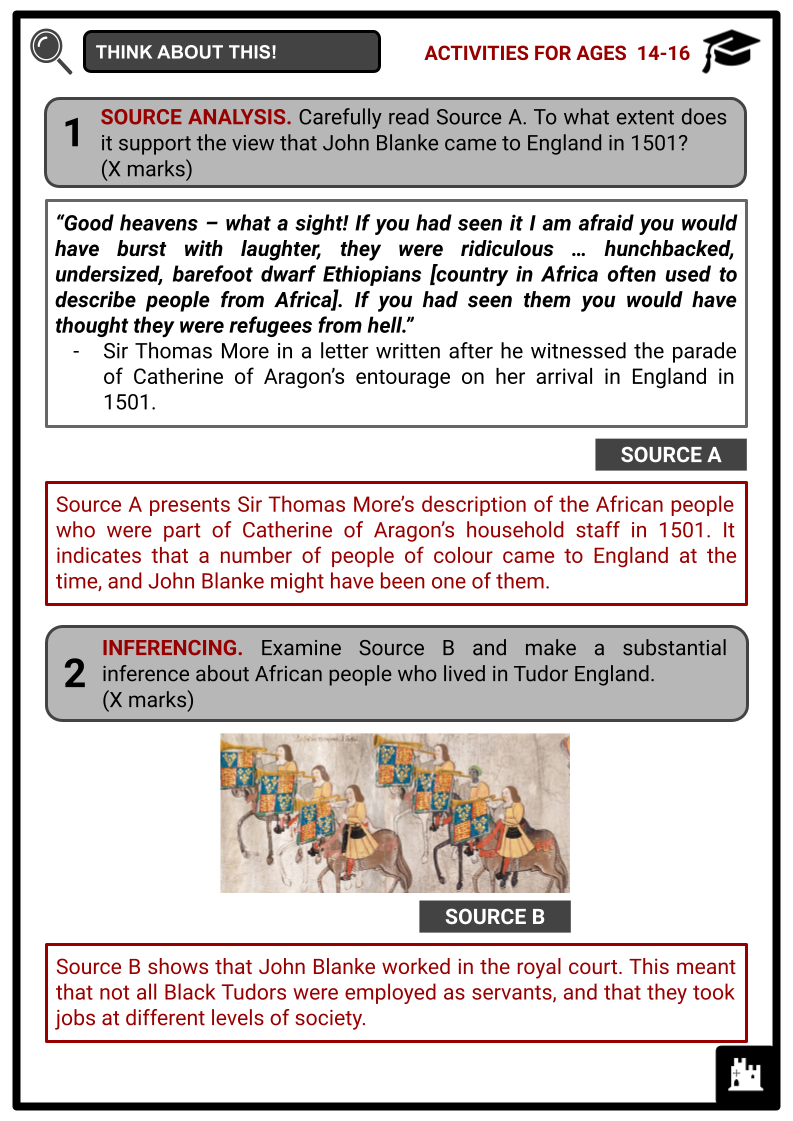
Summary
- Black presence in Tudor England
- John Blanke, the royal trumpeter
Key Facts And Information
Let’s know more about John Blanke!
Historians have found that numerous people of African origin lived in England not only during the Roman occupation of Britain and the medieval period, but also during the Tudor rule. One of the notable Black Tudors was John Blanke, who was one of the royal trumpeters between 1507 and 1512 in the court of Henry VII and Henry VIII. Several historical records reveal the participation of Blanke in significant events in Tudor England. He is one of the earliest recorded people of colour in England and remains the only distinctive Black Tudor portrayed in 16th-century English art.
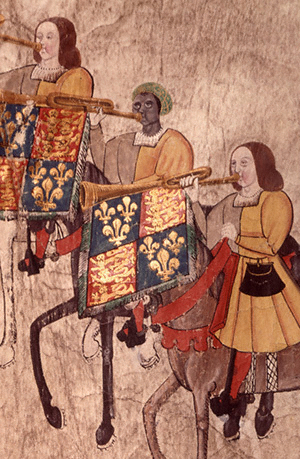
Black presence in Tudor England
- Historians are finding more proof that people of African origin lived in England during the medieval period. It appears that these numbers were considerably smaller than from the Roman occupation of Britain, during which Africans had travelled to and were highly likely to have settled in England. A wealth of evidence including letters, legal records and church records of births and deaths has also been discovered by historians, such as Onyeka Nubia, Miranda Kaufmann and Imtiaz Habeeb, revealing that numerous people of African origin lived in England during the Tudor period (1485–1603).
- England is not the first country in Europe to have seen a growth in its Black population during the early modern period (c1450–1800).
- In fact, in the early 15th century, a significant Black population evolved across southern Europe, notably in Portugal, Spain and Italy.
- This was because it was the Portuguese that first began to settle in the African territories and islands during this period.
- On the other hand, the more northerly countries of the continent, such as France and the Netherlands, saw smaller numbers.
- As a consequence, there emerged an increased contact between Africans and Europeans.
- Meanwhile, in Tudor England, the number of people of African origin or descent was estimated to be in the hundreds.
- These people are often called the Black Tudors and were mentioned in historic records as blackamoors.
- The Black Tudors in the first half of the 16th century mostly arrived via Spain or Portugal.
- Others came to England through English trade with Africa.
How did the Black Tudors come to England?
-
- Some came directly from Africa as traders or as ambassadors.
- Others arrived with the entourages of royals.
- Several travelled with merchants and aristocrats, especially when the English started to trade with Morocco and West Africa directly from the 1550s.
- Many came as the consequence of English privateering and raids on the Spanish empire.
- Parish registers from 1558 until the 17th century listed Black Tudors, which, aside from blackamoors, were described as ‘Neygers’, ‘Aethiopians’ and ‘Negroes’.
- These registers showed that the Africans were baptised, married to English people and buried in parish graveyards across the country, in both cities and the more rural areas.
- This suggests that Black Tudors resided in various locations in England.
- The Africans in Tudor England also took a variety of jobs, with a majority of them employed as servants. Others worked as weavers, sailors, labourers and musicians.
- Some of the Africans found to have lived in Tudor England are as follows:
- John Blanke, the royal trumpeter
- Jacques Francis, the salvage diver
- Diego, the circumnavigator
- Reasonable Blackman, the silk weaver
- Mary Fillis, servant
- Cattelena of Almondsbury
- Evidence of Black presence in Tudor England indicated that many of them were free members of society, contrary to the general view that all Africans were enslaved by the English. The reason for many Black Tudors’ legal status was that England did not participate in the slave trade until the first half of the 17th century. In fact, during the Tudor times, there was no legislation that explicitly forbade slavery in England, but neither was there a law that permitted it.
John Blanke, the royal trumpeter
- The experience of Black Tudors in England appears to be remarkable, owing to their independence. Unlike the majority of Africans across the rest of the Atlantic world, they were free, were paid wages, and were able to earn their own living and testify in court. They were integrated members of their local parishes and were baptised and married by the Church. They were employed at different levels of society. Perhaps the most well-known African from Tudor England was John Blanke, who worked as a trumpeter at the courts of Henry VII and Henry VIII. He is also one of the earliest recorded people of colour in England.
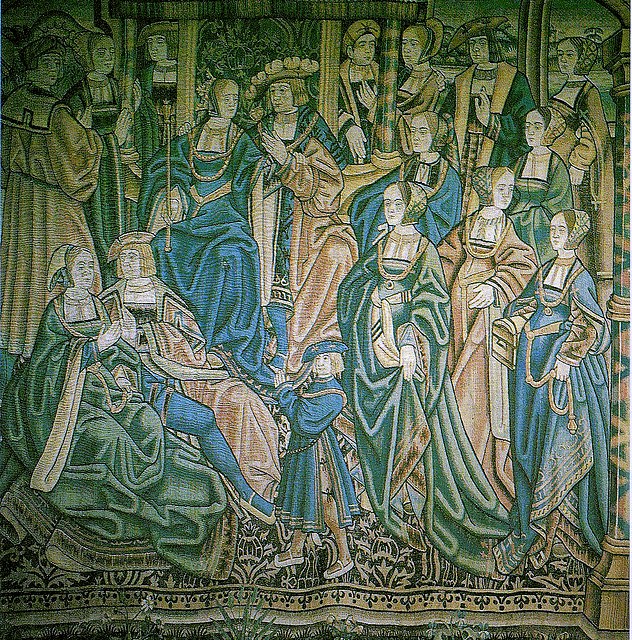
Timeline of Blanke’s life in England
- Blanke’s origins are not known. His birth name was probably different, and his surname may have started out as a nickname.
- Blanke probably arrived in England from Spain in 1501 as part of the huge entourage of Catherine of Aragon, daughter of the influential Catholic Monarchs in Spain. Catherine travelled to England to marry Prince Arthur Tudor, eldest son and heir of Henry VII.
- Blanke entered the household of the new heir of the king, Henry, sometime after the death of Prince Arthur in April 1502.
- Blanke first appeared in a surviving document from the records kept by the Treasurer of the Chamber, who was in charge of managing the royal finances. It was recorded that in early December 1507, a payment of 8d per day or a total of 20 shillings was given to ‘John Blanke the blacke Trumpet’ for his wages. The other trumpeters were paid 12d or 16d a day. Although he was receiving a lesser rate of pay, this was still higher than the 6d standard daily rate for Crown service. Between 1507 and 1512, he was one of eight royal trumpeters under the leadership of Peter de Casanova.
- The same amount of 20 shillings continued to be paid to Blanke as monthly payments throughout the following year.
- In April 1509, Henry VII, aged 52, died of tuberculosis at Richmond Palace. The Great Wardrobe’s Accounts concerning special events listed Blanke receiving black mourning cloth for the king’s funeral, alongside the other royal trumpeters. It is also likely that Blanke accompanied the funeral procession from Richmond to burial in Westminster Abbey.
- A month later, according to the Great Wardrobe’s Accounts concerning special events, Blanke received scarlet cloth, a colour reserved for royal servants of higher status. This was for the coronation of Henry VIII on 24 June.
- Blanke seems to have fully integrated into the group of trumpeters, as the records of the royal chamber listed their wages as a block.
- In 1509, according to written evidence, Blanke wrote to Henry VIII, requesting a pay rise from his then daily rate of 8d to 16d that his colleagues were receiving. He expressed his dissatisfaction with his current wage and reminded the king of the ‘true and faithful service’ he carried out daily. He remarked that he hoped to serve the king for the rest of his life. He then suggested that promoting him into the post that the deceased trumpeter Dominic Justinian occupied was the easiest way to grant his petition. The king signed the undated warrant to indicate his approval of the promotion.
- In celebration of the birth of the king’s short-lived first son, Prince Henry, Henry VIII held a two-day grand jousting tournament in Westminster in February 1511. As it was a significant occasion, the royal trumpeters performed and received a considerably high wage. The event was recorded in the Westminster tournament roll of 1511, in which Blanke was depicted twice.
- In January 1512, Blanke got married. However, little is known about the details of his union. In relation to this event, the king commanded the Great Wardrobe to provide clothes to Blanke as a wedding present, which included ‘a gown of violet cloth, and also a bonnet and hat’. This indicates a sense of Blanke’s importance in connection with Henry VIII’s relations with his servants. After this royal record of the wedding present, there is no trace of Blanke.
- Royal records reported that the monthly wage payments for the musicians continued through to January and February 1513. A full list of the king’s royal trumpeters was drawn up, but Blanke was not on it. This suggests that he might have left royal service at this point, or that the nature of his employment changed.
What have some historians suggested about Blanke’s occupation after 1512?
- Blanke found employment in another royal court that paid more.
- He took on another type of trade following his marriage.
- With his skill as a Spanish speaker and experience as the king’s trumpeter, he was called to serve in the English military expedition in alliance with Spain and likely died in battle.
- Despite the limited evidence about his life between 1501 and 1512 in Tudor England, Blanke is a remarkable proof that Africans living in England during the period were not all enslaved. Additionally, he remains the only distinctive Black Tudor portrayed in 16th-century English art.
Frequently Asked Questions
- Who is John Blanke?
John Blanke was a Black trumpeter in the English court during the reign of Henry VII and Henry VIII in the 16th century.
- When did John Blanke live?
John Blanke lived during the 15th and 16th centuries, with records of his presence at the English court dating back to the late 15th century.
- What is unique about John Blanke's historical significance?
John Blanke is one of the few Black individuals documented in the historical records of the Tudor court in England. His presence challenges historical stereotypes about the racial makeup of medieval and Renaissance Europe.
